Your Backyard Wildlife Habitat: Rabies in Your Back Yard
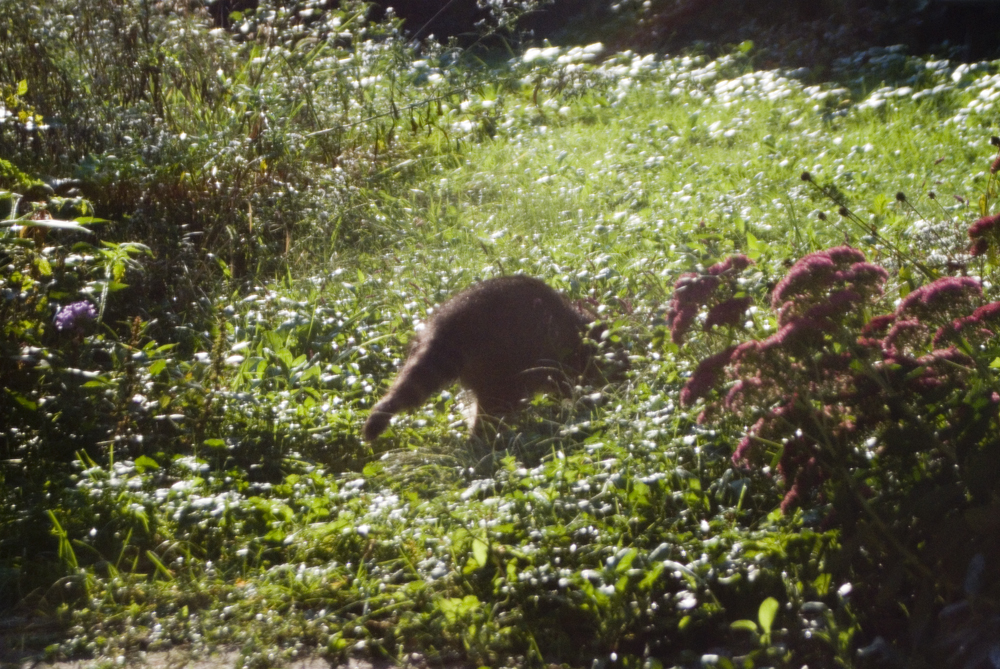
THE PHOTO ABOVE is from last autumn. While I’ve always been aware that we shared our little habitat with raccoons they’d always been on the night shift, partying in the back yard while digging up grubs, turning my compost pile looking for goodies, and playing hide and seek in the hollow maple trees. Seeing one in the daytime, in the early morning or at dusk, is not at all unusual unless you know your population and that’s out of the ordinary for them. Here, it was, and so I consulted one of the wildlife biologists I know to discuss the situation.
Autumn and spring are two times of the year we are more likely to encounter wildlife in our daily life, whether in our back yards, on the trail, on a back road, or even on a city street. In autumn, all animals are fattening up, especially those who hibernate, and in spring they are awakening or simply hungry in the days when food is scarce and they sometimes work overtime in gathering food. For that reason autumn and spring are also times to be more aware of animals like raccoons, observe their behavior, and determine if they are just about their business or you need to take some action. With the increased appearance of wild animals who share our backyards, neighborhoods and trails comes the risk of rabies, and raccoons are the most common carriers, but getting to know typical and non-typical behavior in those animals can help save your life—and theirs.
. . . . . . .
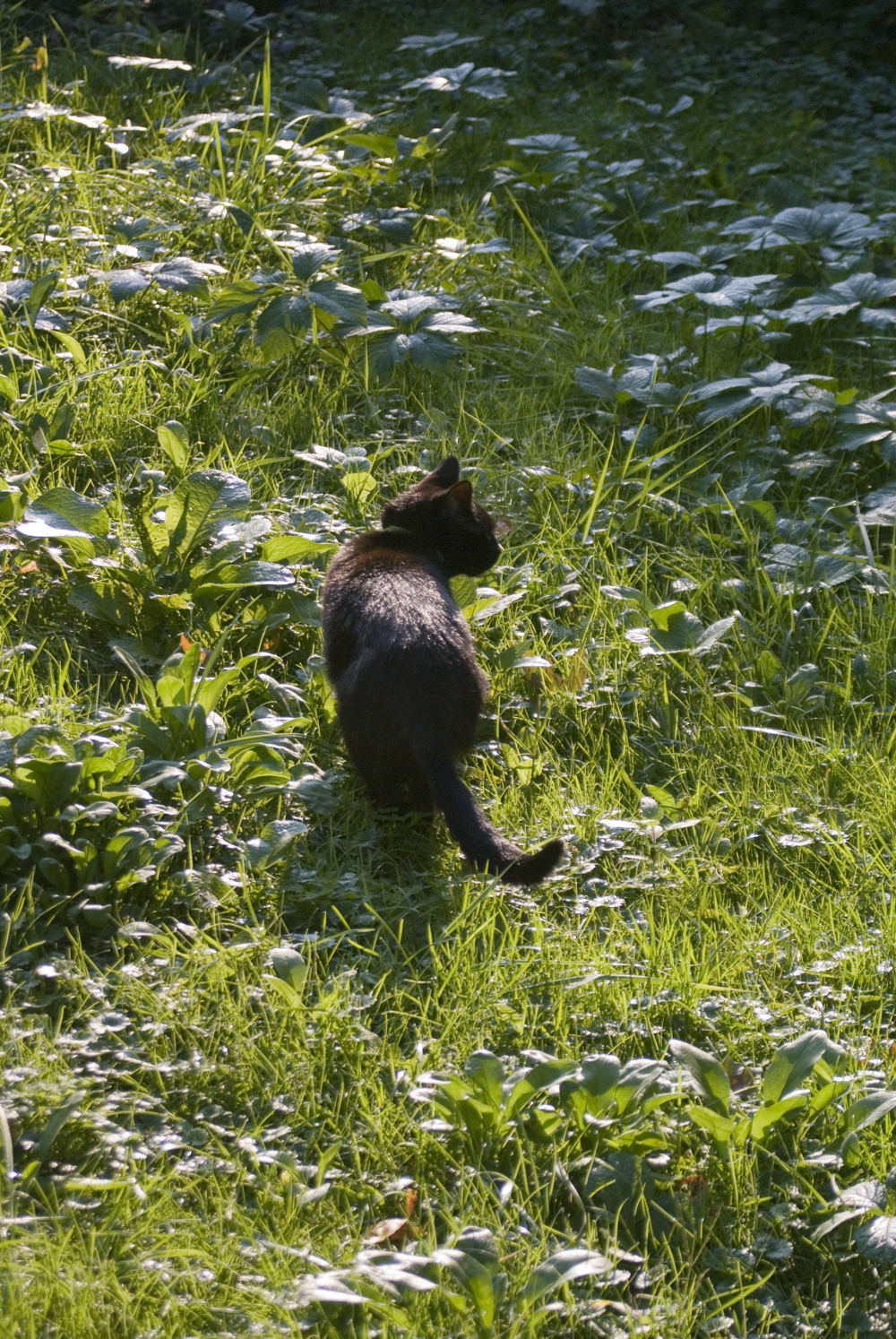
One warm morning last autumn Mimi and I spent some time playing around in the garden, I photographing wildflowers and she exploring the vegetable garden and observing the back yard from atop the picnic table. We had no sooner come in from the garden than through the basement door than we saw a raccoon walk out of the garden from the brick path, nuzzle around at the grass, then walk out into the yard where we had just been!
The time was about 8:30 a.m. and the sun was fully up, which I consider daytime and not a time to see raccoons poking around in my back yard. I know raccoons have been around all the years I’ve lived here and my back yard is a popular hangout and cut-through. I hear them squealing at each other at night sounding as if they are in a death match, but that’s just the way they talk to each other. The mom raccoon and her babies also visit my maple trees in the front yard, which are hollow and full of exciting and tasty insects. But in all these years I’d never seen one any earlier than deep dusk or just before first light.
Of course, the first thing I thought was rabies, though the raccoon was moving and acting normally. Raccoons are the most frequent carriers for rabies across the United States and the frequency in some areas is considered epidemic. Seeing one in the daytime is something to note. I’ve seen rabid raccoons, and this raccoon was acting nothing like it, so my second thought was that there was another reason for it to be out and about in full sun. On consulting with two wildlife two biologists I know it seems that wasn’t so late in the day for a raccoon in the autumn and adding body fat was more of a concern than meeting up with Mimi and me, but I’ve been careful since then.
About rabies
Rabies is a contagious viral disease termed zoonotic because it is one of the diseases which can spread from animals to humans with just one bite from an infected animal. A rabies vaccine is one of the basic set our pets get when young, and a booster is added at about one year for full immunity, though this immunity is only considered effective for a period of time, usually one to three years depending on the type of vaccine.
If your pet bites a human and you can’t provide the certificate of vaccination, your pet will be quarantined for ten days which may be in your home or in a facility denoted by the agency issuing the law in your area—municipality or state. Though the rabies incubation period is typically three to eight weeks after the bite it can also take months to years before the symptoms begin to appear, but infected animals can only transmit the virus when clinical symptoms are present. Once symptoms appear the animal or human usually dies within five days. If the animal’s rabies status isn’t known at the time of the bite, ten days is enough time afterward to see if symptoms appear and the animal is diagnosed with rabies. If no symptoms appear, it’s presumed the animal wasn’t infected with rabies at the time of the bite.
The only way to test for rabies is by examination of the brain tissue of a dead animal. There is no way to test for rabies infection in a live animal.
Even if your pet doesn’t go outdoors or only visits your yard or goes for walks on your street, encountering a rabid animal is still quite possible so check the status of your pet’s rabies vaccine and have it updated if it’s out of date now. A valid rabies vaccine is the law in every state in the United States and in Canada, though how and when the vaccine is administered may vary from one community to the next. I’ve provided a few links at the end of this article.
It’s not so long ago that rabid animals, especially roaming dogs because they were pets who came into the home and were part of everyday life with humans, presented a great health peril in this country from infection with rabies. In fact, any dog acting odd could be shot on sight just at the risk of carrying rabies. Many people died from the disease before treatment was available—a bite would transmit the disease to another animal or human, and without treatment both would die from the effects of the disease in very short order.
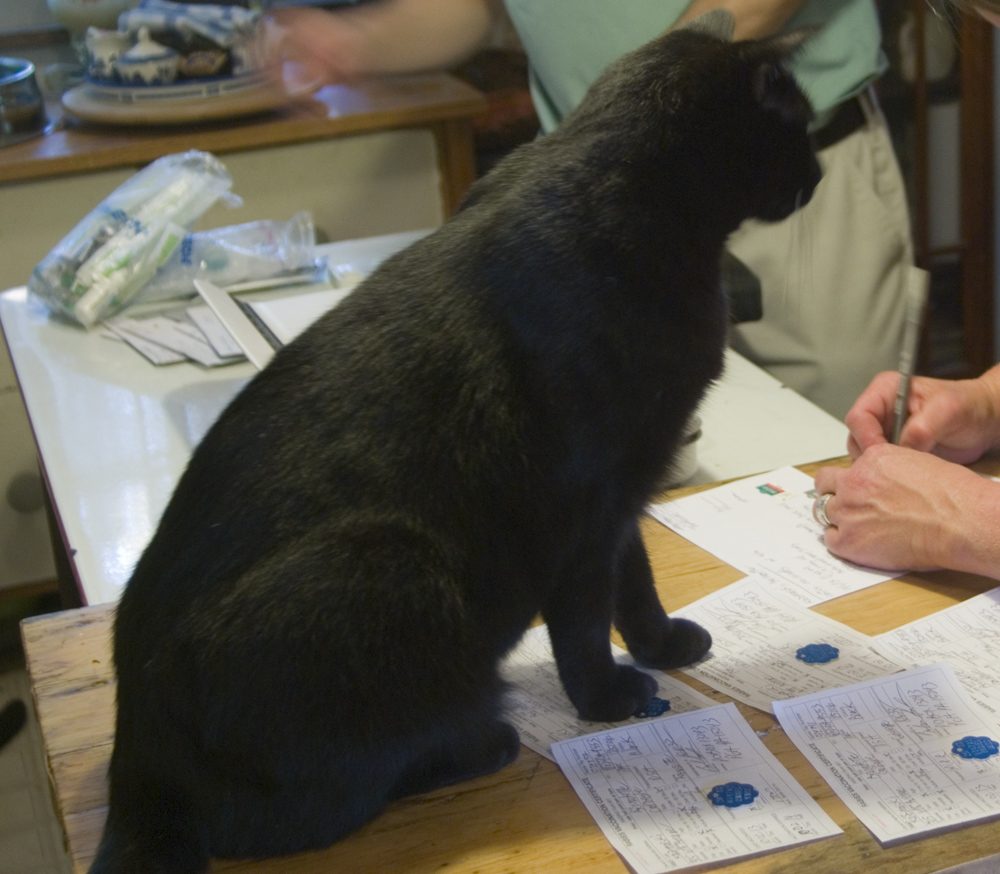
The rabies vaccine
But today in the United States we are fairly safe from this disease that is 100% preventable with a vaccine given to our pets, livestock, and even wild animals. Because the rabies vaccine is so commonly given to our pets we may take for granted that rabies is hardly a threat except for the occasional bat or raccoon or unfortunate stray dog or cat. Since the vaccine was developed and is widely used for pets rabies is no longer common in the United States and the idea of our pets contracting rabies and turning against us is so horrible it became the inspiration for Stephen King’s novel Cujo, and the description of rabies in the animals has no need for literary enhancement.
This is one reason you’ll see low-cost rabies clinics offered within communities for cats and dogs by shelters and rescue groups. It’s also why a rabies vaccine is often part of the protocol in trap-neuter-return programs, or TNR, for cats living outdoors. Currently, stray cats and cats living in communities outdoors through TNR programs are under attack for spreading rabies, though a CDC study reports “human deaths from rabies are rare in the United States — two or three a year — and there have been no deaths linked to cats in decades.”
If you see a raccoon or other animal acting strangely
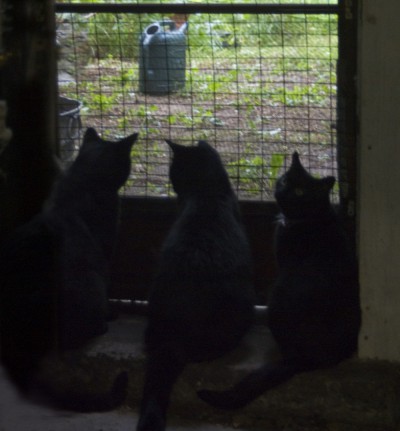
My cats might also be at risk at this door if the raccoon were so inclined to step up and visit them. Their claws can rip through a screen, and that’s one reason I have the wire mesh in addition to the regular screen in the door from the basement to the back yard.
Raccoons are a little bolder than other wild creatures who may visit your yard—many are there all along but you never see them. Most of the time they just want to go about their business and continue looking for food and water especially if you maintain a backyard wildlife habitat—after all, you’ve invited them—but you may also have encounters with less social creatures. At this time of the year they are packing on the fat for winter, especially the ones who tend to hibernate. Through most of the year they are just looking for food, but in the spring they often have young ones hidden somewhere and parents tend to fiercely defend their young.
Be prepared with knowledge
Unless you are trained in dealing with wildlife it’s best to keep your hands off and if you feel threatened call your local wildlife rehabilitators for advice or assistance. Remember that wildlife is protected by state and federal laws and it’s actually illegal to trap and keep, or trap and remove, a wild animal unless you have a license to do so. Be aware that when you call animal control in most communities, wild animals are usually not relocated to a new area, instead they are killed. Take the time now to check with your local animal control and animal shelters for their policies, and also find a resource for a wildlife professional who can help you with the situation.
And always keep your pets safe in these situations as well as yourself and your neighbors. Most wild animals will avoid an encounter, preferring to go about their daily activities. The places we live now were once their habitat as well.

We still need to be aware and be cautious despite the vaccines. My home state of Pennsylvania is always in the top 5 and in 2010 had the distinction of having the most reported cases of domestic rabies of all 50 states: between January 1 and May 30 of 2011, 114 raccoons, 18 skunks, 15 foxes and 12 cats tested positive for rabies in the state, according to an article in the Pittsburgh Post-Gazette. In June 2011, A dog tangled with a rabid raccoon on the trail where I regularly ride my bike, walk, photograph and paint. The dog was fine because he’d had his rabies vaccine. You can read a wealth of rabies statistics about Pennsylvania on the PA Department of Agriculture’s website.
A current rabies vaccine for pets is the law in Pennsylvania, and in Allegheny County where I live, the Health Department sets out baited food with the rabies vaccine for raccoons in areas they are known to travel, or those numbers might be even higher.
Rabies around the world
Other countries around the world are not so lucky as we are. More than 55,000 people still die every day from infection with rabies because the vaccine isn’t available or isn’t widely used, and worst of all, in countries where there is little or no humane law, available veterinary care or capacity for spaying and neutering pets, rabies prevention turns into mass round-ups and killings of dogs, especially, to prevent an outbreak. Read about World Rabies Day to find out what’s happening around the world.
Find rabies laws in your state or area, and more information on rabies
Administration of Rabies Vaccination State Laws from the American Veterinary Medical Association with a linked list of rabies laws throughout the United States.
Rabies Facts and Prevention Tips from the American Humane Association.
And for more information about raccoons in particular, visit the Raccoon Rabies Info page on The Gable’s Raccoon World
Backyard Wildlife Habitats

My backyard wildlife habitat was certified through National Wildlife Federation’s program in 2003, and their site is still one of my favorite references for information. Visit and read about it, and begin planning your own and be certified!
. . . . . . .
Read the entire series of introductory articles:
An Introduction to Backyard Wildlife Habitats
What’s in Your Backyard? The First Step in Planning Your Backyard Wildlife Habitat
What Else is in Your Backyard: The Fauna That Fill It
Bringing it All Together: Enhancing and Developing Your Habitat
. . . . . . .
Or just read other articles in the category of Your Backyard Wildlife Habitat
Browse some rescued cats and kittens—browse here or visit PittsburghCAT!
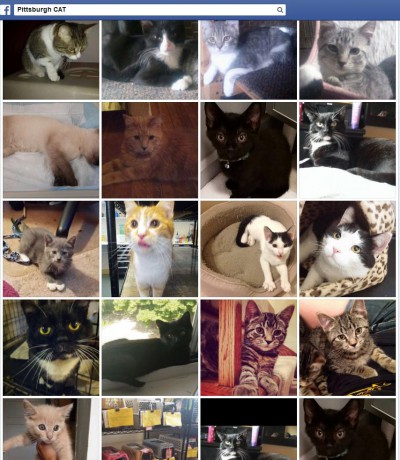
All images used on this site are copyrighted to Bernadette E. Kazmarski unless otherwise noted and may not be used without my written permission. Please ask if you are interested in using one in a print or internet publication. If you are interested in purchasing a print of this image or a product including this image, check my Etsy shop to see if I have it available already. If you don’t find it there, visit Ordering Custom Artwork for more information on a custom greeting card, print or other item.
Subscribe to The Creative Cat on your Kindle


Start with a 14-day free trial. You can cancel at any time during the free trial period. If you enjoy your subscription, do nothing and it will automatically continue at the regular monthly price of 99 cents. Click here to subscribe to The Creative Cat on your Kindle.
© 2014 | www.TheCreativeCat.net | Published by Bernadette E. Kazmarski
—
Weekly schedule of features:
Sunday: Essays, Pet Loss, Poetry, The Artist’s Life
Monday: Adoptable Cats, TNR & Shelters
Tuesday: Rescue Stories
Wednesday: Commissioned Portrait or Featured Artwork
Thursday: New Merchandise
Friday: Book Review, Health and Welfare, Advocacy
Saturday: Your Backyard Wildlife Habitat, Living Green With Pets, Creating With Cats
And sometimes, I just throw my hands in the air and have fun!
—

